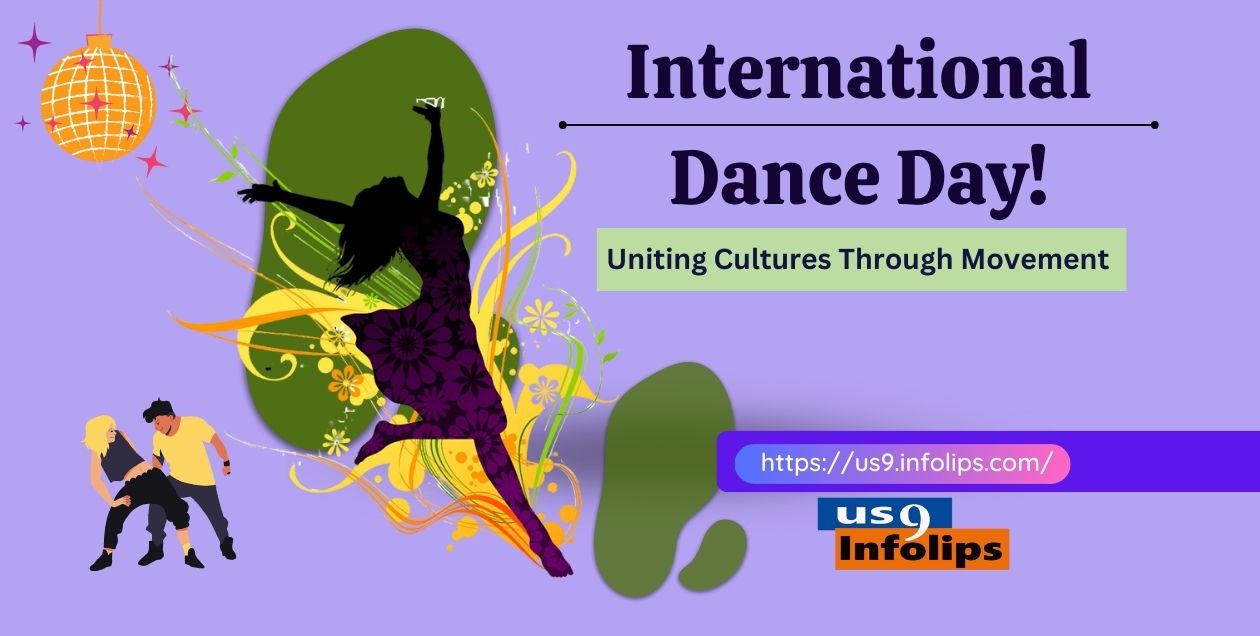International Friendship Day | Exploring the Rich Tapestry
International Friendship Day | Exploring the Rich Tapestry
International Friendship Day
International Friendship Day is a celebration of the bonds that connect us, emphasizing the importance of friendship in creating a more peaceful and understanding world. Celebrated globally, this day encourages people to acknowledge and appreciate the friendships that enrich their lives. Here are ten key aspects of International Friendship Day:
Table of Contents
1. Origin and History
International Friendship Day was first proposed by the World Friendship Crusade, an organization founded in 1958. The idea was to foster a culture of peace through friendship. The United Nations officially recognized July 30th as International Friendship Day in 2011, encouraging communities to celebrate the day in meaningful ways.
2. The Importance of Friendship
Friendships play a crucial role in our lives, providing emotional support, joy, and a sense of belonging. They help us navigate life’s challenges and celebrate successes. Friendships can transcend cultural, political, and religious boundaries, fostering greater understanding and empathy among different groups.
3. Global Celebrations
Different countries celebrate Friendship Day on various dates, with activities ranging from exchanging friendship bands to hosting gatherings and events. In some places, it’s a day for giving gifts, while in others, it’s about spending quality time with friends.
4. Promoting Peace and Understanding
The essence of International Friendship Day lies in its ability to bridge gaps between individuals and communities. By promoting dialogue and mutual respect, friendships can help reduce tensions and prevent conflicts.
5. Celebrating Diversity
Friendship Day is an opportunity to celebrate the diversity of friendships. Friends come from various backgrounds, bringing unique perspectives and experiences that enrich our lives. This diversity can lead to greater tolerance and acceptance.
6. Role in Mental Health
Friendships have a positive impact on mental health. They can reduce stress, increase happiness, and improve overall well-being. Having a support system of friends can help individuals cope with difficult times and enhance their quality of life.
7. Educational Initiatives
Many schools and organizations use International Friendship Day to teach children the value of friendship. Activities and lessons focus on empathy, kindness, and cooperation, helping young people understand the importance of building and maintaining healthy relationships.
8. Corporate Engagement
Businesses also participate in International Friendship Day by promoting team-building activities and encouraging employees to appreciate their colleagues. These initiatives can improve workplace morale and foster a positive company culture.
9. Digital Friendships
In the digital age, friendships extend beyond physical boundaries. Social media and technology allow people to connect and maintain friendships across distances. International Friendship Day highlights the importance of nurturing these digital relationships with the same care and attention as in-person ones.
Acts of Kindness:
International Friendship Day is an ideal time to perform acts of kindness, whether it’s reaching out to an old friend, helping a neighbor, or volunteering in the community. These actions can strengthen bonds and spread goodwill.
Objectives of International Friendship Day
- Promote Peace:
Encourage peace and harmony through the formation of friendships across different cultures and nations. - Foster Understanding:
Cultivate mutual understanding and respect among people from diverse backgrounds. - Encourage Dialogue:
Facilitate open communication and dialogue to resolve conflicts and build stronger communities. - Celebrate Diversity:
Acknowledge and celebrate the diverse nature of friendships and their contributions to society. - Enhance Cooperation:
Promote cooperative efforts in communities and workplaces to achieve common goals. - Support Mental Health:
Highlight the role of friendships in supporting mental health and well-being. - Educate Youth:
Teach young people the value and importance of friendship in building a peaceful world. - Promote Acts of Kindness:
Inspire individuals to perform acts of kindness and strengthen their bonds with others. - Utilize Technology:
Encourage the use of technology to maintain and strengthen friendships across distances.
9 Facts About International Friendship Day
- Official UN Recognition:
The United Nations officially designated July 30th as International Friendship Day in 2011, aiming to promote friendship as a tool for achieving global peace. - Multiple Dates:
While the UN recognizes July 30th, many countries, including India, celebrate it on the first Sunday of August, while others have different dates. - Origin in Paraguay:
The concept of a day dedicated to friendship originated in Paraguay in 1958 with the World Friendship Crusade. - Popular in South America:
Friendship Day is widely celebrated in South American countries, where it’s common to exchange gifts and spend time with friends. - Role of Social Media:
The digital age has boosted Friendship Day’s popularity, with platforms like Facebook and Instagram allowing people to celebrate and share memories online. - Global Participation:
Countries around the world celebrate Friendship Day, although customs and traditions vary widely. - Commercialization:
Much like Valentine’s Day, International Friendship Day has become commercialized, with companies marketing products specifically for the occasion. - Cultural Events:
Many communities host cultural events and festivals to mark the day, emphasizing the importance of friendship in society. - Promotion of Peace:
The day underscores the role of friendship in promoting peace and preventing conflicts, aligning with the UN’s objectives.
Interesting and Unknown Facts About International Friendship Day
1. Early Celebrations in the U.S.:
Friendship Day was first proposed in the U.S. by Joyce Hall, the founder of Hallmark Cards, in 1930 as a way to celebrate friendships.
2. Resistance to Commercialization:
The initial push for the day faced resistance due to its perceived commercial nature, leading to its decline in popularity in the U.S.
3. Friendship Bands:
The tradition of exchanging friendship bands is particularly popular in India and Nepal, where friends tie colorful bands on each other’s wrists.
4. UN Campaigns:
The UN has used International Friendship Day to launch campaigns promoting kindness, understanding, and reconciliation.
5. Cultural Variations:
In Finland and Estonia, Friendship Day coincides with Valentine’s Day, emphasizing the importance of friends alongside romantic relationships.
6. Literary Influence:
The idea of celebrating friendship has been influenced by literature, with authors like Ralph Waldo Emerson and Aristotle extolling the virtues of friendship.
7. Corporate Influence:
Some companies use the day as an opportunity for team-building exercises and fostering workplace camaraderie.
8. Charitable Events:
Many organizations use Friendship Day to raise funds for charitable causes, linking the concept of friendship with philanthropy.
9. Celebrity Endorsements:
Celebrities often use social media to share personal stories about friendship, raising the profile of the day.
9 Controversies Surrounding International Friendship Day
1. Commercialization Criticism:
Critics argue that the day has become overly commercialized, with businesses exploiting it for profit rather than promoting genuine friendship.
2. Date Confusion:
The existence of multiple dates for celebrating Friendship Day leads to confusion and diminishes the impact of a unified global celebration.
3. Cultural Appropriation:
Some critics claim that the celebration has been co-opted by cultures that do not traditionally emphasize friendship in the same way.
4. Superficial Celebrations:
Concerns have been raised that social media has turned the day into a superficial display rather than a meaningful celebration of true friendships.
5. Neglect of Loneliness:
Critics point out that the day often overlooks individuals who struggle with loneliness and do not have strong friendship networks.
6. Economic Disparities:
The commercialization of the day may alienate those who cannot afford to participate in gift-giving or celebrations.
7. Focus on Youth:
Some argue that the emphasis on friendship bands and social media tends to target younger audiences, neglecting older generations.
8. Overemphasis on Romantic Love:
In some cultures, the day is overshadowed by Valentine’s Day, which is perceived as more significant.
9. Lack of Global Awareness:
Despite UN recognition, International Friendship Day is not as widely recognized or celebrated as other international observances.
Conclusion
International Friendship Day is a meaningful occasion that highlights the importance of friendships in our lives and across the globe. By fostering connections and promoting understanding, this day encourages people to appreciate and nurture their friendships.
Whether through small gestures or grand celebrations, International Friendship Day reminds us of the vital role friendships play in building a more compassionate and peaceful world.
FAQs :
- When is International Friendship Day celebrated?
- It is celebrated on July 30th, according to the United Nations, though some countries celebrate it on different dates.
- It is celebrated on July 30th, according to the United Nations, though some countries celebrate it on different dates.
- What is the purpose of International Friendship Day?
- The day aims to promote friendship and understanding among people, fostering peace and reducing conflicts.
- The day aims to promote friendship and understanding among people, fostering peace and reducing conflicts.
- How can I celebrate Friendship Day?
- You can celebrate by spending time with friends, exchanging gifts or friendship bands, and participating in events that promote friendship.
- You can celebrate by spending time with friends, exchanging gifts or friendship bands, and participating in events that promote friendship.
- Is International Friendship Day recognized worldwide?
- Yes, it is celebrated in many countries, though the level of recognition and the date of celebration may vary.
- Yes, it is celebrated in many countries, though the level of recognition and the date of celebration may vary.
- What are friendship bands?
- Friendship bands are colorful bracelets exchanged between friends as a symbol of their bond, particularly popular in India and Nepal.
- Friendship bands are colorful bracelets exchanged between friends as a symbol of their bond, particularly popular in India and Nepal.
- How did International Friendship Day originate?
- It originated in Paraguay in 1958, proposed by the World Friendship Crusade, and was later recognized by the UN in 2011.
- It originated in Paraguay in 1958, proposed by the World Friendship Crusade, and was later recognized by the UN in 2011.
- Why are there different dates for Friendship Day?
- Different cultures and countries have adopted their own dates and traditions, leading to variations in celebration.
- Different cultures and countries have adopted their own dates and traditions, leading to variations in celebration.
- What role does social media play in Friendship Day?
- Social media helps people celebrate and share memories with friends, extending the reach of Friendship Day celebrations.
- Social media helps people celebrate and share memories with friends, extending the reach of Friendship Day celebrations.
- How does Friendship Day contribute to peace?
- By fostering friendships across cultural and national boundaries, the day encourages understanding and cooperation, promoting global peace.
Follow us for more captivating articles and stay connected to explore the world. Let’s embrace the power of communication and understanding.
Disclaimer: The views in this article are given with the help of information available on the net. Readers are encouraged to conduct their own research before making any decisions. The publisher disclaim any liability for any loss or damage caused directly or indirectly.

Related topics:
1. Perfect World Travel Guide
2. 9 Most Popular EV Cars in the USA
3. 9 Best Things About Apple TV 4K – Third Generation
4. Think before You Renew Amazon Prime
5. Jimmy Carter: A Great Legacy
6. Memorial Day: Honoring the Sacrifice, Celebrating Freedom
School Site :
For English grammar and lot more : Smart School Infolips
Marathi Poems: Marathi Rang












